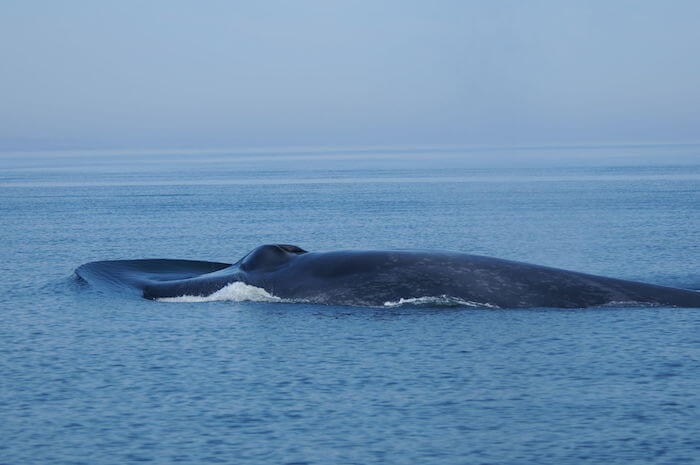On February 23, off the village of Godbout, a large rorqual approaches the coast. Its long back glides across the water whenever it surfaces to breath, taking an average of three breaths between dives. “You can hear it approaching from afar,” points out a local birder, referring to its loud spout, which is easily audible up to several kilometres away. This collaborator manages to snap a few shots of the animal and sends them to the Marine Mammal Research and Education Group (GREMM) team to enquire whether it is a blue whale or a fin whale. It’s a blue whale, and a familiar one at that.
“How did you determine the species?” asks the observer. The GREMM research assistant explains that there were several indicators that tipped him off: the general appearance of the animal, its relatively pale colouring, the size and shape of the blowholes, as well as the small dorsal fin. And let’s not forget: over the years, marine mammal identification becomes second nature for researchers thanks to their well-trained eyes.
The GREMM team also sends the photos to its colleagues at the Mingan Island Cetacean Study (MICS) in an attempt to identify the individual. MICS has been studying blue whales in the St. Lawrence since 1979. This experienced team has identified over 475 individuals in the Northwest Atlantic between Bermuda and the northern reaches of Davis Strait (between Canada and Greenland).
They confirm that the individual in question is Slash (B119), a male seen on a number occasions in various study regions (Haute-Côte-Nord, Minganie and Gaspésie) since 1985. It is identified by the whitish scars on its right flank, as its skin pigmentation – THE field mark in blue whales par excellence – is hard to make out in the photos. The most recent sighting of Slash dates back to 2015, off of Longue-Rive in the North Shore region. To read the account of this encounter: Surface Feeding Behaviour in Blue Whales… by René Roy.





